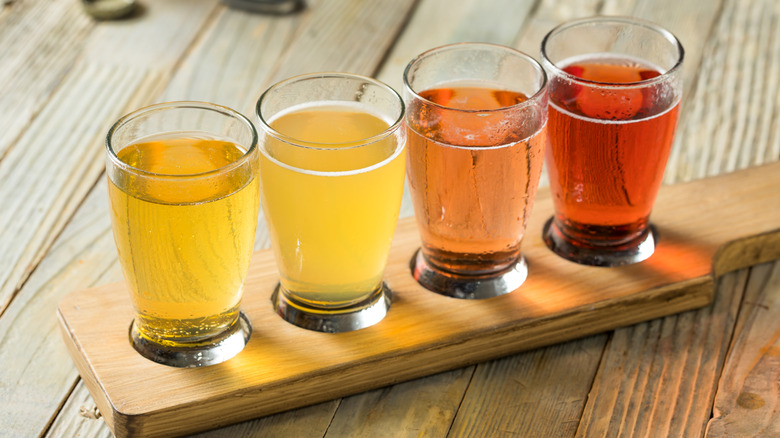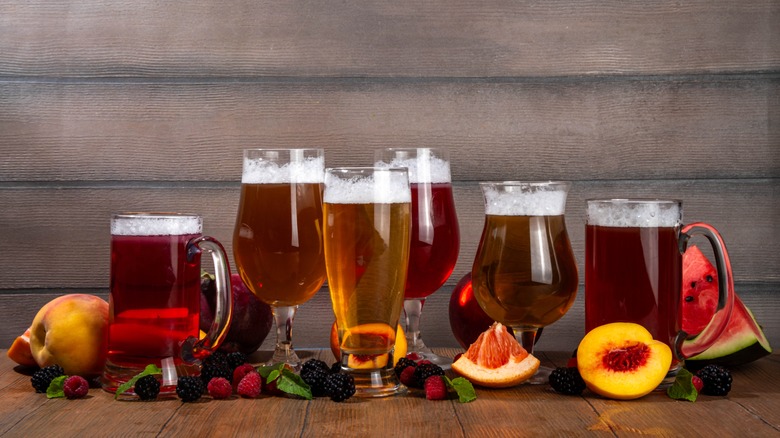The Preferred Order To Drink Cider When At A Tasting
While cider deserves more of a spotlight as a year-round treat, it gets extra attention around the fall. This makes sense, as many of us head to farms and apple orchards in autumn, and cider's being fermented from apples (or maybe pears) instills it with a farm-grown ethos. The best way to take advantage of this cider season of sorts is to engage in cider tastings. There's so much to know about cider, and tastings are a great introduction to help you learn and find your favorites. Certain factors make for an especially beneficial cider tasting and the order of what you try is a vital one.
You want to start your tasting with the most straightforward cider — think about what the most accessible cider for a beginner would be, something made from apples and dry or off-dry, so you get that full, traditional apple flavor and a crisp, palate-cleansing dryness and effervescence. Then, you can move into apple ciders in dry, off-dry, semi-dry, or semi-sweet varieties that have been infused with different herbs, botanicals, and spices — you're building on the classic apple profile with subtle complexity. Next, try apple ciders that have been barrel-aged, another way cider-makers incorporate the flavors of spirits plus notes like vanilla from the barrels. Move onto ciders made from various fruits next to explore different flavors, and finish with ciders that have been blended with apple brandy for boosted strength and sweetness.
Why order matters for a cider tasting
The reason this order is important is because you want to be able to fully taste and experience each varietal, and trying something very intense like a fortified cider or cider made with pineapples could overwhelm your palate, keeping you from getting all the nuances of a traditional off-dry apple cider. You want to think about it like building up, in a few different ways. You're building up your cider knowledge, learning the quintessential apple variation first before moving on to discover ciders flavored with botanicals or made with other fruits or barrel-aged with whiskey notes. You're building up in terms of flavor intensity, ensuring you're able to process subtleties before enjoying bigger, more pronounced notes like the ones you'd get from a cider fortified with apple brandy. And you're also building up in terms of alcohol content, starting with something more low-key and approachable and finishing with those higher-ABV ciders.
While cider has to be made from at least 80% apples or pears to be considered true cider, it can feature anything from blackberries to watermelon. Trying ciders like these are a great way to understand just how varied the world of cider can be, but that journey really should begin with cider at its simplest — being acquainted with the beauty of apple cider strengthens your appreciation of the other creative choices producers can make.

